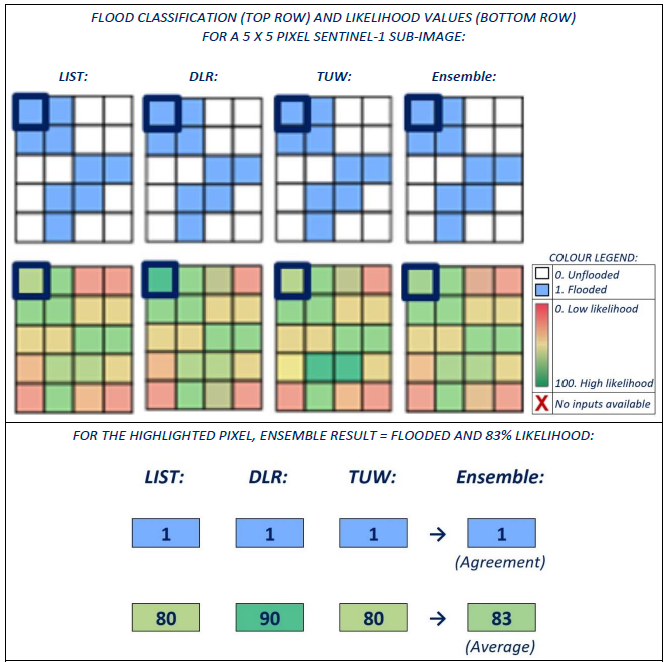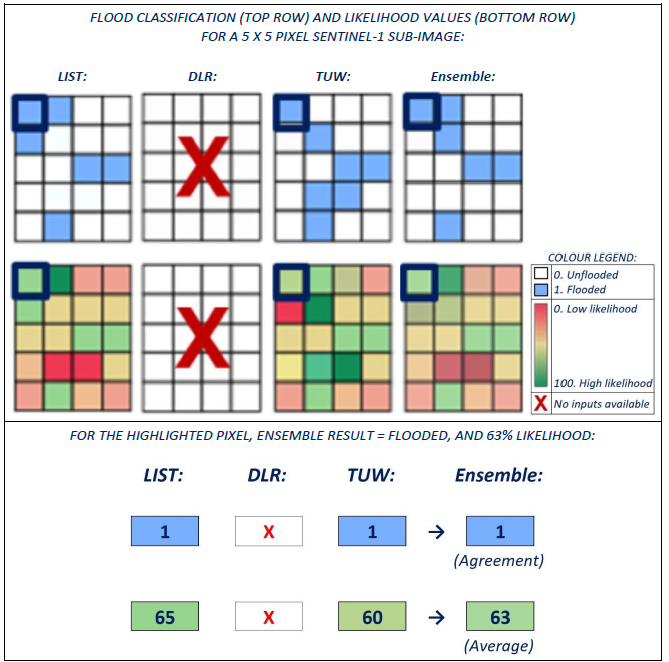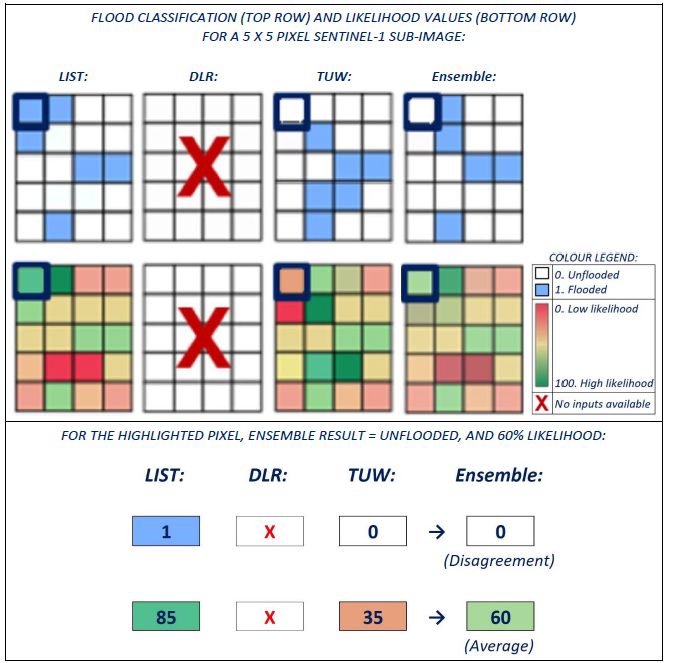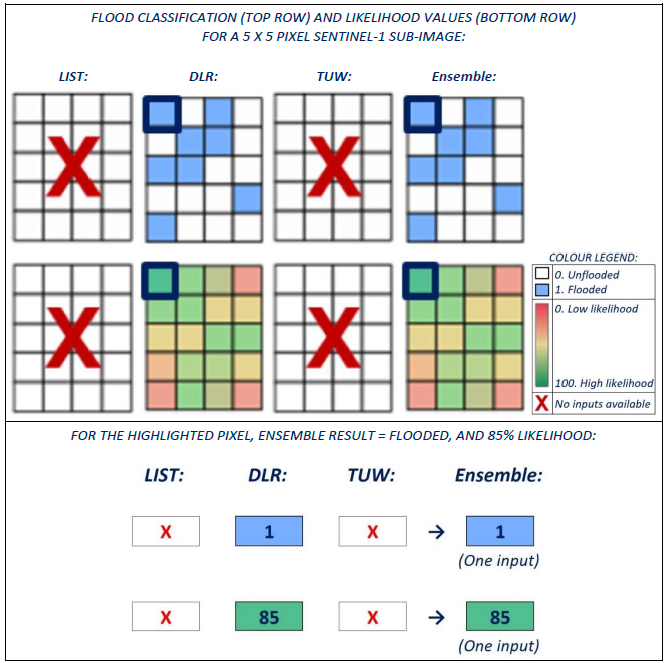The GFM Ensemble flood mapping algorithm combines the flood classification results and likelihood values generated by the three individual flood mapping algorithms (LIST, DLR and TUW) for each input Sentinel-1 image grid-cell. The GFM Ensemble algorithm first assigns to each grid-cell a ratio equal to the proportion of individual algorithms providing inputs that classified the grid-cell as Flooded. A majority-based consensus rule is then used to classify the grid-cell as Flooded (i.e. ratio > 0.5), Unflooded (i.e. ratio <= 0.5), or Unclassified (i.e. no individual algorithm provided an input). The ten possible cases for classifying a grid-cell with the GFM Ensemble algorithm are shown in Table 18. The GFM Ensemble algorithm also computes the Likelihood Value for each grid-cell, as the average Likelihood Value computed by the individual algorithms providing inputs for that grid-cell.
|
CASE |
RATIO |
INDIVIDUAL ALGORITHMS PROVIDING INPUTS |
INDIVIDUAL ALGORITHMS CLASSIFYING GRID-CELL AS FLOODED |
ENSEMBLE RESULT |
|
1 |
1.00 |
3 |
3 |
FLOODED |
|
2 |
1.00 |
2 |
2 |
FLOODED |
|
3 |
1.00 |
1 |
1 |
FLOODED |
|
4 |
0.67 |
3 |
2 |
FLOODED |
|
5 |
0.50 |
2 |
1 |
UNFLOODED |
|
6 |
0.33 |
3 |
1 |
UNFLOODED |
|
7 |
0.00 |
3 |
0 |
UNFLOODED |
|
8 |
0.00 |
2 |
0 |
UNFLOODED |
|
9 |
0.00 |
1 |
0 |
UNFLOODED |
|
10 |
- |
0 |
0 |
NOT CLASSIFIED |
Table 18: The ten possible cases of classifying a grid-cell with the GFM Ensemble flood mapping algorithm, using a majority-based consensus (i.e. ratio > 0.5).
The GFM Ensemble flood mapping algorithm accepts Geotiff files containing the flood classification results and likelihood values from each individual algorithm that provided inputs. The Ensemble algorithm checks if all layers can be loaded. If a layer from one algorithm cannot be loaded, it is likely that that algorithm failed to produce a result. Therefore, the number of flood layers loaded successfully gives the number of algorithms that provided inputs. For example, if two layers load successfully, and one layer fails to load, the number of individual algorithms applied is two.
Five examples of the behaviour of the GFM Ensemble algorithm in computing flood classification results and Likelihood Values, are illustrated in Figure 21 to Figure 25, and are summarized below:
|
# |
EXAMPLE |
COMMENTS |
|
1 |
Inputs from allthree individual algorithms, and full agreement: (See Figure 21). |
|
|
2 |
Inputs from all three individual algorithms, and partial agreement: (See Figure 22). |
|
|
3 |
Inputs from onlytwo individual algorithms, and agreement: (See Figure 23). |
|
|
4 |
Inputs from onlytwo individual algorithms, and disagreement: (See Figure 24). |
|
|
5 |
Inputs fromonly one individual algorithm: (See Figure 25). |
|




